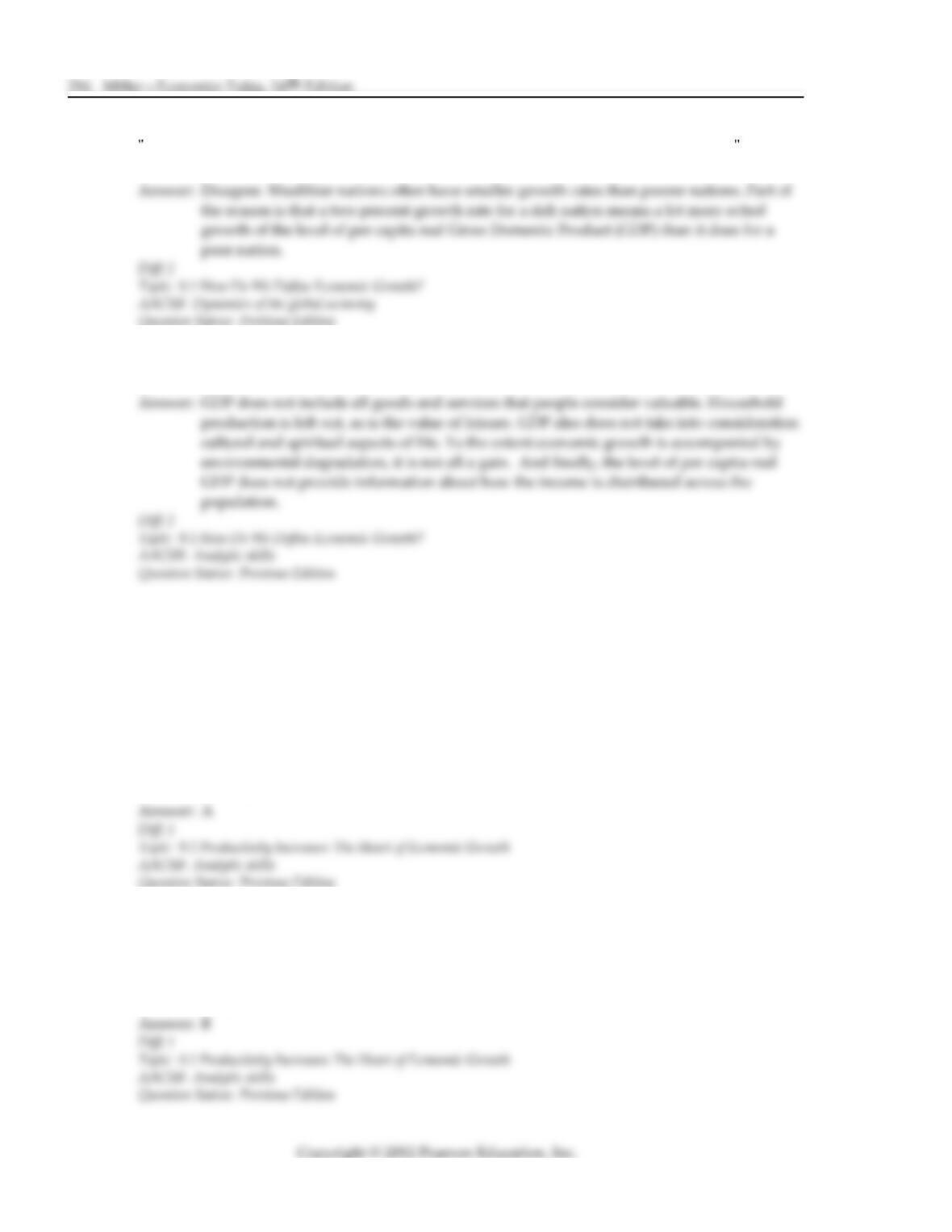19) It is likely that a small increase in a country s saving rate will have
A) a large effect on per capita real GDP many years later because the increase in saving leads
to a slightly higher rate of economic growth which has large effects over time.
B) a large effect on per capita real GDP immediately because the increase in saving leads to a
much larger rate of economic growth.
C) a small effect on per capita real GDP many years later because the increase in saving will
have very little effect on the growth rate.
D) a small effect on per capita real GDP many years later because the increase in saving will
be offset in later years by a decrease in the saving rate.
20) Countries with higher rates of saving
A) experience lower growth rates in the future.
B) have a large population.
C) have a greater number of poor people.
D) have higher rates of growth.
21) Economic growth depends on
A) low tax rates.
B) high government spending.
C) high rates of consumption.
D) increases in the capital stock as a result of saving.
22) Which one of the following is true?
A) Saving deters economic growth, because it takes money out of circulation.
B) Saving enables economic growth by providing for investment in the capital stock.
C) International comparisons have found no relationship between the rate of saving and the
level of per capita real GDP.
D) Economies with sophisticated credit markets, such as the United States, have no need for
saving.







































